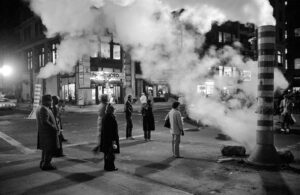
![]()
From May 10 – June 23, 2024, the Arlington Museum of Art presents the Texas Photographic Society 36th Annual Member Show in the Community Gallery. Assistant Director of Exhibitions Natalie Neale, an artist and avid photographer herself, oversees the exhibition schedule for the gallery. She is excited about the show for many reasons, but particularly for the rich storytelling visitors will find within each photograph as well as the wide variety of techniques included in the show. We asked Natalie to tell us more.
![]()
AMA: Are there particular aspects of this show that people might enjoy knowing about?
Natalie Neale: Because this show is a combination of different photo processes, we get to see a variety of photographs that have a specific “tone” to the piece. There is a combination of silver gelatin prints, digital prints, and even a print created with photopolymer gravure.
An interesting fact about silver gelatin prints is that this type of process was first invented and used as early as 1873. It was the first process to develop photographs with chemicals instead of light. So it is cool that some of the artists in the show utilized this technique.. a century and a half later!
Photopolymer gravure is essentially a “photo etching” where the artist takes a photopolymer plate and an inkjet print of their image on a transparent material. This is then pressed together in an air-tight UV light box to develop the image, and is then left in the sun for a while afterwards to ‘set’ the image. All of these different processes are very tedious, making the final photograph unique.
AMA: Are there any artists in the show that have a special story?
NN: Each artist is established and a lot of them are full-time professional photographers and have unique stories. Liz Potter kept the same camera for 27 years! She built her own studio in her house. David Francis, based in Houston, primarily focuses on photographing the Scotland coast. Charles Ford started his photography career taking photos of a student medical group in Bolivia. Most of his work was taken with a Leica M6.
AMA: Why is it important to you and the AMA to partner with organizations like the Texas Photographic Society?
NN: Texas Photographic Society represents many different artists all over Texas, and all over the nation too. They have lots of different types of exhibitions that range from having emerging artists as young as 18 to more established artists with well known photography careers. This is especially important because the Community Gallery focuses heavily on local artists, and photography is just one facet of documenting the Texas environment and defining what it means to be a Texas native.
AMA: What in your opinion is special about photography as a medium?
NN: Photography is very special because it is not a simple snap-print-hang process. Photography not only has the ability to be a vessel for the imagination, but when transferred onto a surface, can mean something special to the individual viewer. There are also so many different chemicals, surfaces, and cameras artists can use to capture a subject to convey a specific meaning to the viewer.
AMA: What else do you think people need to know about this show?
NN: One of the artists (Rebecca Borcher) traveled 8,452 miles to take her photograph!
![]()
About the Community Gallery
The Community Gallery at the Arlington Museum of Art has the heart of a local art gallery and the soul of a community gathering place. Celebrating diversity and encouraging artistic expression are its driving forces. Through an ambitious rotation of curated exhibits and related programs, the Community Gallery provides a platform for emerging and established artists to showcase their unique perspectives and talents. Because there is no admission fee to the Gallery, it makes the transformative power of art accessible to all, encouraging people of all ages and backgrounds to explore, appreciate, and participate in the arts while fostering a shared sense of belonging.
